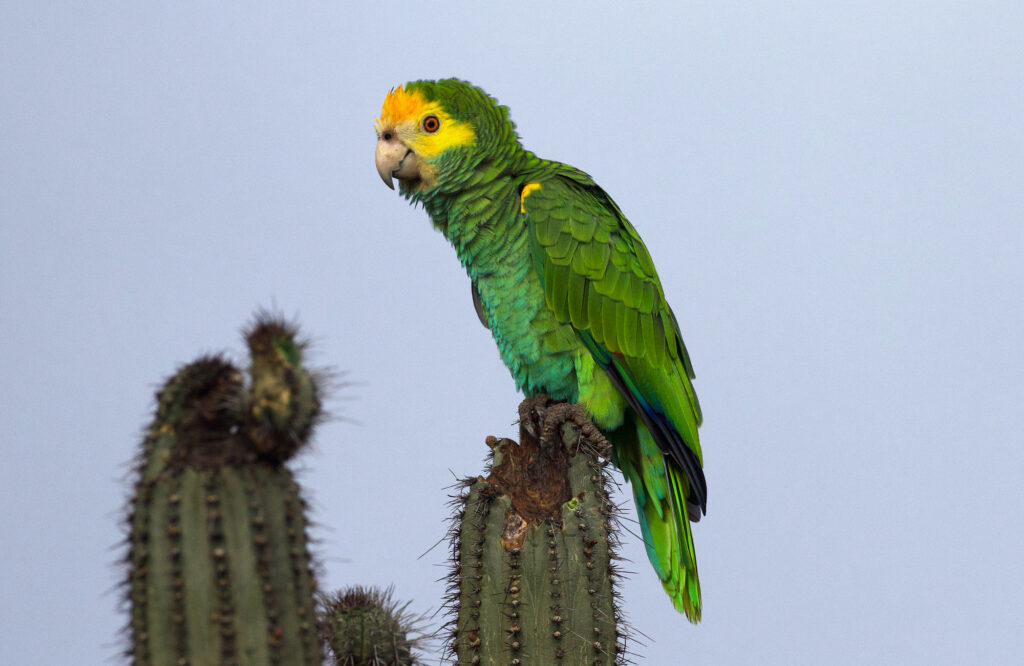Yellow-shouldered Amazon Recovery
Beginning in 2002, the WPT funded projects to protect the Yellow-shouldered Amazon (Amazona barbadensis) on Bonaire and in Venezuela, supporting ringing and amnesty initiatives with local nature and environment conservancy organisations on Bonaire, population surveys and habitat-use research, habitat restoration and protection and rescue, rehabilitation and release of parrots caught in trade.
In January 2024, Aruba Conservation Foundation announced the reintroduction of Yellow-shouldered Amazons onto Aruba, thanks to the dedicated efforts of FPNA staff and with support from the World Parrot Trust, Stichting Vogelpark Avifauna and local organizations. Most of the released birds adapted well to their surroundings and breeding behaviour is being observed. The FPNA team provides the Amazons with supplementary food to ensure they have a constant food source while they continue to learn how to forage for themselves.
In October 2024, Aruba Conservation Foundation in collaboration with Tera Barra, a Bonaire-based organisation that restores native plants on Bonaire, hosted a two-day workshop focused on restoring Aruba’s natural areas with native plants.
Status: IUCN Near Threatened / CITES Appendix I
Population: 2500-10,000 mature individuals, decreasing.
Threats: This parrot has a restricted range. Is affected by habitat loss on island range due to tourism and overgrazing by domestic animals, and is widely exploited for local bird trade. In some areas is persecuted for visiting crops.
Range: The species is restricted to small coastal areas in Venezuela and the islands of Blanquilla, Margarita and Bonaire. Introduced to Curaçao, Netherlands Antilles.
Natural history: The Yellow-shouldered Amazon occurs in areas with cacti, thorny bush and trees; also cultivated areas and mangroves. It is found up to 450 m (1476 ft) on Margarita, possibly higher on the mainland. Birds take fruits of trees and bushes, seeds, nectar-rich blossoms, cactus tops and fruit. Breeding is March-September; sometimes October on Bonaire. The nest is in a tree, cliff or cactus cavity.
Against all odds: Bones’ journey back to the wild – December 1, 2024
40 years of Yellow-shouldered Amazon research, conservation and management – November 22, 2024
Native vegetation reforestation workshop – October 25, 2024
Historic reintroduction of Yellow-shouldered Amazons on Aruba – January 12, 2024

